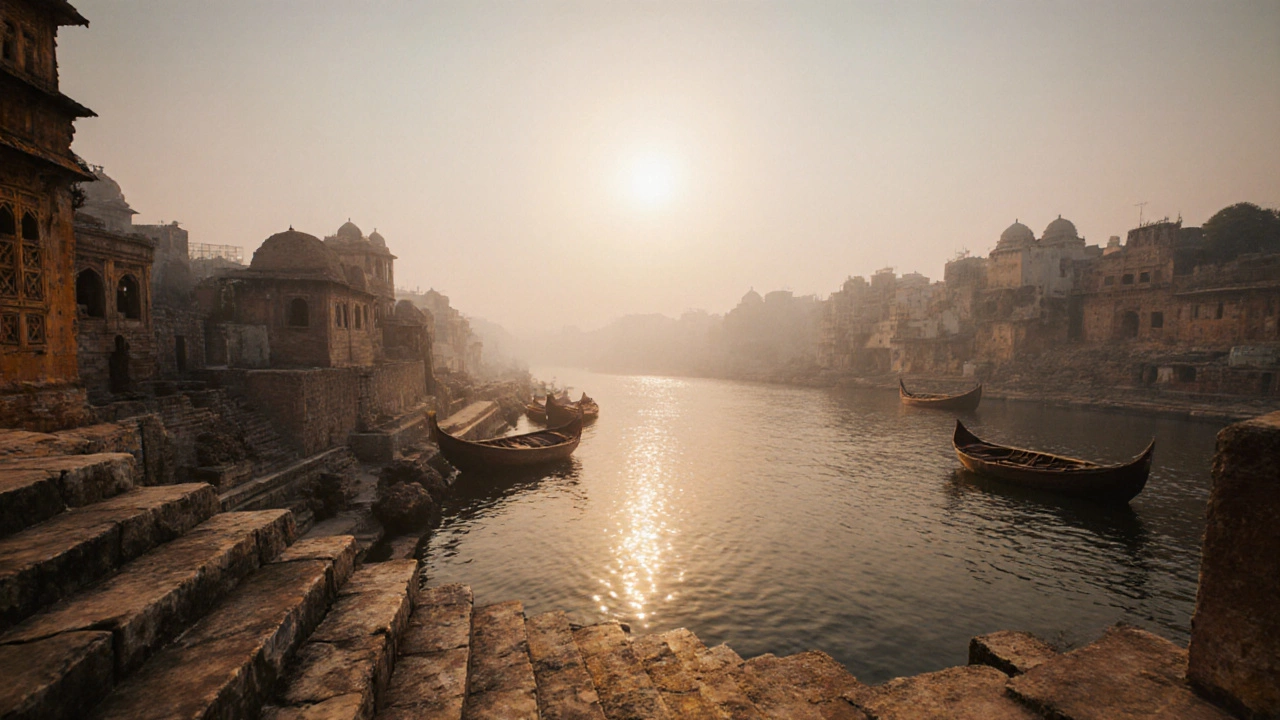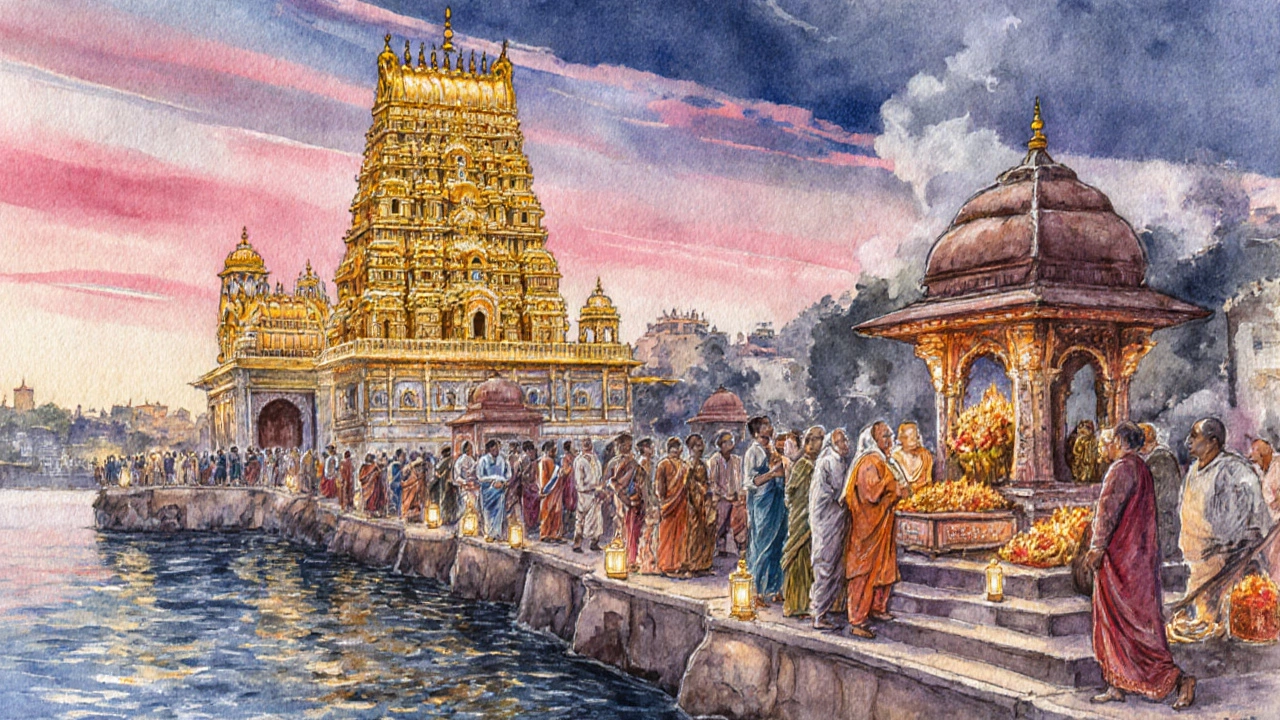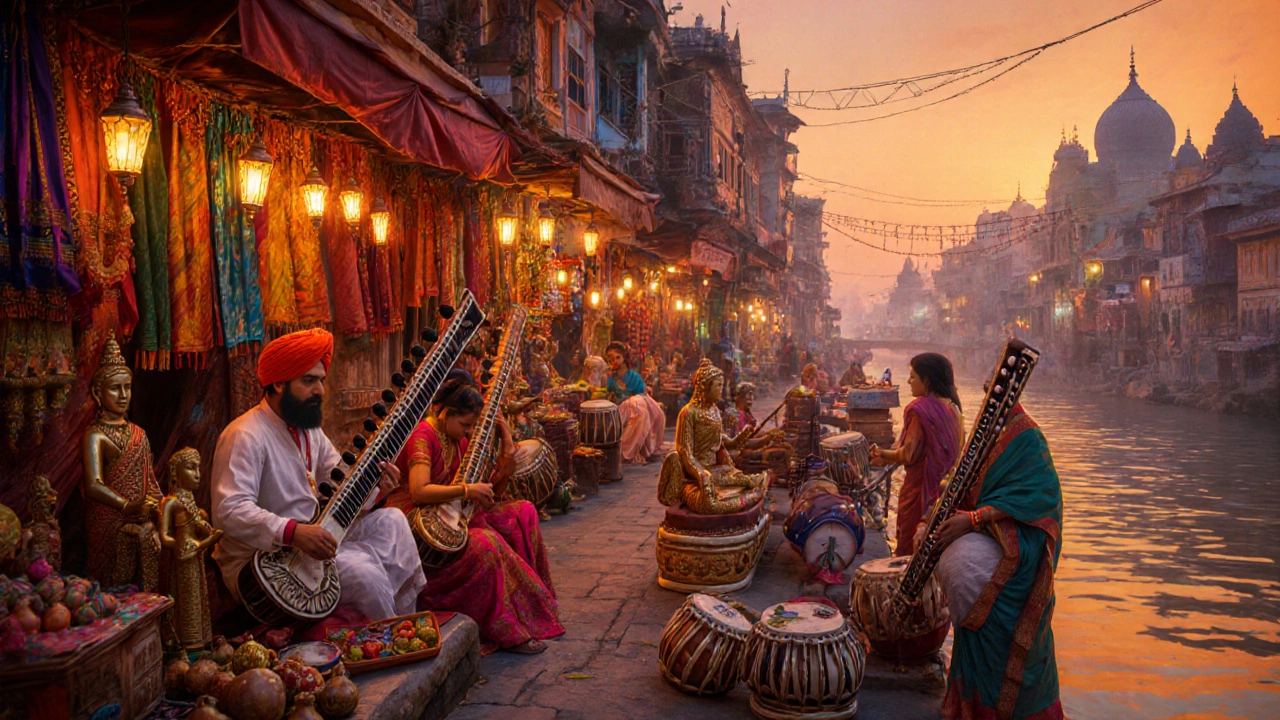Why Varanasi Earns the Nickname ‘Rome of India’

- Oct, 8 2025
- 0 Comments
- Aaron Blackwood
Varanasi vs. Rome Comparison Tool
Varanasi
The Eternal City of Hinduism
- Age of Settlement ~3,000 years
- Primary Religion Hinduism
- World Heritage Status UNESCO City (2019)
- Annual Pilgrims ~10 million
- Iconic River Ganges
Rome
The Eternal City of Catholicism
- Age of Settlement ~2,800 years
- Primary Religion Catholicism
- World Heritage Status UNESCO Historic Centre (1980)
- Annual Pilgrims ~5 million (Vatican)
- Iconic River Tiber
Key Similarities: Both cities are ancient spiritual centers, attract millions of pilgrims annually, and are recognized by UNESCO for their cultural heritage.
What Makes Varanasi Like Rome?
Explore the parallels that earned Varanasi its nickname:
- Ancient Origins: Both cities have histories spanning over 2,000 years.
- Spiritual Hub: Each serves as the central religious center for its dominant faith.
- UNESCO Recognition: Both are globally recognized for their cultural importance.
- Pilgrimage Destination: Millions visit yearly for religious and spiritual reasons.
- Cultural Density: Rich layers of history, art, music, and traditions coexist.
Did You Know?
Varanasi is one of the few cities in the world that has been continuously inhabited for over 3,000 years, much like Rome's enduring legacy.
When travelers hear the nickname Rome of India, the city that most often fits the bill is Varanasi, a millennia‑old spiritual hub on the banks of the Ganges River. This guide explains why Varanasi bears that title, what makes it unique, and how you can experience its timeless charm without the usual tourist hiccups.
Historical Roots: From Ancient Port to Spiritual Metropolis
Varanasi’s recorded history stretches back over 3,000 years, making it one of the oldest continuously inhabited cities on Earth. Archaeological layers reveal settlements from the Indus Valley era, while ancient scriptures like the RigVeda mention a sacred river that scholars identify as the Ganges River. The city’s early role as a trade port attracted merchants, scholars, and mystics, weaving a cultural tapestry that mirrors Rome’s evolution from a modest settlement to a global empire.
Religious Parallel: The ‘Eternal City’ of Hinduism
Just as Rome is the heart of Catholicism, Varanasi sits at the core of Hindu spirituality. The Kashi Vishwanath Temple, dedicated to Lord Shiva, draws millions of devotees each year. Pilgrims believe that a cremation on the ghats grants moksha-liberation from the cycle of rebirth-much like the Vatican’s role in granting absolution to Catholics. The city’s myriad temples, shrines, and ashrams create a spiritual density that earns the “Rome of India” moniker.
Architectural Echoes: Layers of Time in Stone and Water
The city’s layout resembles Rome’s concentric layers of history. Old city lanes narrow like the alleys of Trastevere, while grand boulevards such as Assi Ghat, the longest and most vibrant riverside step serve as living museums of architecture-from 12th‑century Buddhist stupas to colonial British mansions. UNESCO’s 2019 inscription of Varanasi as a World Heritage City underscores its global cultural significance, echoing Rome’s status as a UNESCO World Heritage Site.

Cultural Vibrancy: Art, Music, and Silk
Music spills from every doorway, with classical maestros performing Hindustani ragas on the banks of the Ganges. The city’s famed Banarasi silk industry produces fabrics as intricate as the brocades of Rome’s Renaissance courts. Local artisans craft bronze statues, intricate wood carvings, and hand‑painted gourds, offering visitors a kaleidoscope of sensory experiences.
Education and Scholarship: A Modern ‘University City’
Education has always been a pillar of Varanasi’s identity. The Banaras Hindu University (BHU), founded in 1916, ranks among India’s top research institutions. Its sprawling campus, with Mughal‑style columns and banyan‑shaded courtyards, mirrors the historic university districts of Rome, where scholars have gathered for centuries.
Practical Guide: When, How, and What to See
Best time to visit: October to March offers cool evenings and clear skies-ideal for sunrise boat rides. Getting there: The nearest airport is Varanasi’s Lal Bahadur Shastri International (VNS), connected to major Indian metros. Trains from Delhi, Kolkata, and Mumbai arrive at the bustling Varanasi Junction. Top attractions include:
- Sunrise boat cruise on the Ganges - watch pilgrims performing rituals at Manikarnika Ghat, the most active cremation site.
- Visit Sarnath, where Buddha delivered his first sermon-a spiritual counterpart to Rome’s St.Peter’s Basilica.
- Explore the narrow lanes of the old city, sampling street food like kachori‑sabzi and jalebi.
- Shop for authentic Banarasi silk at the bustling Chandni Chowk market.
Travelers should wear modest clothing when visiting temples, carry a small bottle of hand sanitizer, and be prepared for crowds-especially during festivals like Diwali and Mahashivratri.

Comparison: Varanasi vs. Rome
| Aspect | Varanasi | Rome |
|---|---|---|
| Age of settlement | ~3,000years | ~2,800years |
| Primary religion | Hinduism | Catholicism |
| World Heritage status | UNESCO City (2019) | UNESCO Historic Centre (1980) |
| Annual pilgrimage visitors | ≈10million | ≈5million (Vatican) |
| Iconic river | Ganges | Tiber |
Tips to Avoid Common Pitfalls
- Beware of scams: Unlicensed boat operators may overcharge. Book rides through reputable hotels or the official tourism desk.
- Dress modestly: Bare shoulders and short shorts can be frowned upon at temples.
- Stay hydrated: Even in cooler months, the climate can be dry. Carry a reusable water bottle.
- Plan for crowds: Major festivals draw massive crowds. Arrive early to secure a spot at popular ghats.
- Respect rituals: Do not photograph cremation rites without permission.
Beyond Varanasi: Other ‘Indian Romes’ to Explore
If the “Rome of India” label intrigues you, consider these related destinations that echo Rome’s blend of history and spirituality:
- Amritsar: Home to the Golden Temple, the Sikh world’s sacred heart.
- Madurai: Known as the “Athens of the South,” with the towering Meenakshi Amman Temple.
- Haridwar: Another major Ganges pilgrimage hub, often called the “Gateway to the Gods.”
Frequently Asked Questions
Why is Varanasi compared to Rome?
Both cities serve as ancient spiritual capitals for their dominant religions, attract millions of pilgrims annually, and boast layers of history that coexist with vibrant modern life.
What is the best time of year to experience Varanasi’s festivals?
October to March aligns with cooler weather and hosts major events like Diwali, Mahashivratri, and the Ganga Mahotsav, offering festive atmospheres without extreme heat.
How can I travel between Varanasi and Sarnath?
Sarnath lies just 10km north of Varanasi; you can hire a taxi, take a local auto‑rickshaw, or rent a bicycle for a scenic ride through the countryside.
Is it safe for solo female travelers?
Yes, provided you follow standard precautions: stay in well‑reviewed accommodations, avoid isolated ghats after dark, and keep your belongings secure.
What unique souvenirs should I bring home?
Authentic Banarasi silk sarees, brass temple bells, hand‑carved wooden toys, and locally made sandalwood incense are popular choices that capture the city’s artistic soul.